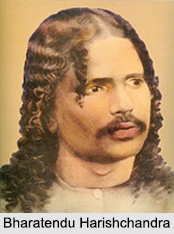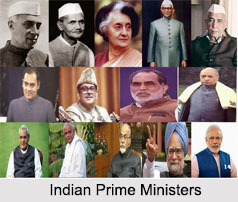The Bakhshali manuscript is a venerable mathematical document that taces its origin in ancient India. It has been meticulously inscribed on birch bark. Its discovery dates back to the year 1881 when it was found in the village of Bakhshali, nestled within the region of Mardan, near Peshawar, which presently lies in Pakistan, once historically recognized as Gandhara. Named after the village where it was found, Bakhshali manuscript is regarded as a significant artifact in the realm of Indian mathematics and is noted as possibly "the oldest extant manuscript in Indian mathematics."
Dating of the Bakhshali Manuscript
In 2017, a significant endeavor was undertaken to unravel the enigmatic history of the Bakhshali Manuscript through radiocarbon dating. This venerable manuscript, comprising three folios, provides a captivating glimpse into the annals of time and the empires that once reigned over the Indian subcontinent.
Radiocarbon dating shed light on the temporal origins of these folios, revealing a remarkable journey through three distinct centuries and empires. The dating results unveiled a chronological period spanning from AD 224 to 383 during the Indo-Scythian era, followed by the Turk Shahis` dominion from 680 to 779, and finally, the Saffarid dynasty`s reign from 885 to 993. This revelation, if substantiated, raises intriguing questions about the provenance of the manuscript, particularly how folios from disparate centuries found their way into a singular collection, eventually resting in their archaeological burial site.
Prior to the seminal radiocarbon dating study in 2017, scholarly consensus revolved around the notion that the Bakhshali Manuscript represented a transcribed version of an older, more ancient text. Estimating the antiquity of this manuscript was a challenging task, largely contingent on the content it preserved. The proposed radiocarbon dates brought forth a new dimension to the discourse surrounding this manuscript, compelling researchers to reevaluate its origins and historical significance.
Discovery of the Bakhshali Manuscript
The discovery of the Bakhshali Manuscript, a remarkable archaeological find, dates back to the year 1881 during the era of British India. The manuscript was unearthed by a local farmer in the vicinity of Bakhshali, a village situated in proximity to Mardan, which now resides within the borders of present-day Khyber Pakhtunkhwa, Pakistan. This humble discovery eventually captured the attention of scholars and enthusiasts alike, paving the way for comprehensive research and analysis.
Over the years, a multitude of scholars dedicated their efforts to deciphering and comprehending the script inscribed within the Bakhshali Manuscript. However, it was a scholar by the name of G.R. Kaye who would ultimately take on the task of editing and organizing the manuscript`s contents. In 1927, Kaye`s work culminated in the publication of the manuscript as a book, making its wisdom and historical significance accessible to a broader audience.
The Bakhshali Manuscript, in its current form, is incomplete, comprising a total of seventy leaves crafted from birch bark. The exact sequence or intended order of these leaves remains shrouded in mystery, adding an element of intrigue to the manuscript`s contents. As of today, the manuscript is housed within the Bodleian Library, situated at the University of Oxford, bearing the catalog number MS. Sansk. d. 14. Notably, select folios from this manuscript are periodically loaned to museums, allowing scholars and enthusiasts the opportunity to engage with its historical and mathematical revelations.
Composition of the Bakhshali Manuscript
The Bakhshali manuscript is composed in a form of literary Sanskrit that bears influences from the contemporary dialects of its time. The composition of the Bakhshali Manuscript is a subject of scholarly inquiry and intrigue, offering valuable insights into its linguistic origins and the context of its creation. The manuscript is penned in an earlier variant of the Sharada script, a writing system renowned for its prevalence in the northwestern regions of South Asia, particularly in areas such as Kashmir and neighboring territories. This script was notably in use during the period spanning from the 8th to the 12th century. While the intended language of the manuscript is Sanskrit, it bears distinct phonetic and morphological influences from local vernacular dialects, giving rise to unique linguistic peculiarities within the text. These linguistic traits exhibit similarities with Buddhist Hybrid Sanskrit, and while they share affinities with Apabhra?sa and Old Kashmiri, the precise identification of the underlying dialects remains elusive. It is conceivable that the manuscript comprises a compilation of fragments drawn from various works composed in different linguistic varieties. Notably, some irregularities in the text may be attributed to scribe errors or orthographical variations.
A noteworthy colophon within the manuscript sheds light on its origins. It attributes the authorship and transcription to a Brahmin identified as "the son of Chajaka," described as a "king of mathematicians." This Brahmin, aside from transcribing the manuscript, may have also authored the commentary. Furthermore, the colophon mentions a fragmented word, "rtikavati," which has been interpreted as a reference to the place "Martikavata," as mentioned by Varahamihira in association with northwestern India. This geographical context suggests that Martikavata could be the location where the manuscript was likely penned.
Contents of the Bakhshali Manuscript
One of the manuscript`s most profound contributions to the field of mathematics is its incorporation of the earliest known Indian representation of the zero symbol. This symbol, a fundamental component of modern numerical notation systems, was a groundbreaking innovation in the evolution of mathematical notation.
The Bakhshali Manuscript constitutes a comprehensive compilation of mathematical content, structured as a compendium of rules and accompanying illustrative examples. The manuscript follows a systematic format in which each example is presented as a problem, followed by a detailed description of its solution, culminating in the verification of the problem`s successful resolution. These mathematical problems are articulated in verse form, while the associated commentary, providing calculations and explanations, is presented in prose.
The spectrum of mathematical concepts covered within the manuscript is notably diverse, encompassing the domains of arithmetic, algebra, and geometry, with a particular focus on mensuration. The specific mathematical topics addressed within the manuscript encompass a range of fundamental principles, as listed below:
Fractions: The manuscript expounds upon the principles governing fractions, elucidating their operations and applications.
Square Roots: It delves into the intricacies of square roots, offering insights into their calculations and manipulations.
Arithmetic Progressions: The manuscript provides guidance on arithmetic progressions, elucidating their rules and applications.
Geometric Progressions: It similarly addresses geometric progressions, offering both rules and practical applications.
Solutions of Simple Equations: The manuscript explores methods for solving straightforward equations, providing clarity on their resolution.
Simultaneous Linear Equations: It addresses the resolution of systems of linear equations, elaborating on methods for solving them concurrently.
Quadratic Equations: Quadratic equations are comprehensively covered, with a focus on their solutions and properties.
Indeterminate Equations of the Second Degree: The manuscript also delves into the realm of indeterminate equations of the second degree, offering guidance on their resolution and solutions.
Mathematical Rules in the Bakhshali Manuscript
The Bakhshali Manuscript stands as a compilation of mathematical rules and accompanying examples, all presented in a structured format. The manuscript employs a systematic approach, where mathematical rules are elucidated in verse, followed by prose commentaries expounding upon these verses. Within this framework, each mathematical concept is meticulously delineated, following a prescribed pattern:
Rule Presentation: The manuscript commences with the presentation of a mathematical rule, establishing a clear framework for problem-solving.
Example Illustration: Following each rule, one or more illustrative examples are provided, enabling readers to apply the rule in practical scenarios.
Numerical Statement: A crucial aspect of the manuscript involves the tabular presentation of numerical information associated with each example, facilitating a structured understanding of the problem.
Step-by-Step Computation: The subsequent step involves a meticulous computation process, wherein the example is worked out methodically. The manuscript quotes the rule while navigating through the problem-solving steps.
Verification: To ensure the accuracy of the solution, a verification step is incorporated, confirming that the computed solution indeed satisfies the stated problem. This emphasis on verification sets the manuscript apart and is reminiscent of Bhaskara I`s commentary on the mathematics chapter of the Aryabha?iya, a practice that later became obsolete.
The rules contained within the manuscript encompass a diverse array of mathematical problems and techniques. These include the resolution of systems of linear equations, the handling of quadratic equations, the manipulation of arithmetic progressions and arithmetico-geometric series, approximations for computing square roots, and the management of negative numbers, particularly in contexts related to profit and loss. Furthermore, the manuscript provides guidance on various measurements, such as the assessment of the fineness of gold, showcasing its practical applicability in diverse mathematical and economic contexts.
Scholars have diligently compared the content of the Bakhshali Manuscript with several Sanskrit texts, revealing striking similarities and potential verbatim quotations from revered literary works such as the Mahabharata. Additionally, comparisons have extended to passages within the Ramayana, Vayupurana, Lokaprakasha of Kshemendra, and other texts. Notably, certain mathematical rules featured in the manuscript find striking similarity with works such as the Aryabhatiya of Aryabhatta, Aryabhatiyabhashya of Bhaskara I, Patiganita and Trairashika of Sridhara, Ganitasarasamgraha of Mahavira, and Lilavati and Bijaganita of Bhaskara II. An unnamed manuscript, housed in the Patan Jain library, bears resemblances to the Bakhshali Manuscript, further highlighting its significance in the realm of ancient mathematical literature.
Use of Numericals in the Bakhshali Manuscript
The Bakhshali Manuscript employs numerical notations characterized by a place-value system, demonstrating a profound understanding of mathematical principles that were ahead of its time. One distinctive feature of its numerical notation is the utilization of a dot as a placeholder for the numerical value zero. This innovative use of a dot as a zero placeholder led to the coining of the term "shunya-bindu," which translates to "the dot of the empty place."
The concept of using a dot as a placeholder for zero in numerical notation is not unique to the Bakhshali Manuscript. References to this innovative numerical system can also be traced in Subandhu`s Vasavadatta. Scholars have dated the Vasavadatta text to a period between 385 and 465, providing historical context to the emergence of this numerical innovation.
It`s worth noting that prior to the radiocarbon dating conducted in 2017, the inscription of zero on the wall of a temple in Gwalior, Madhya Pradesh, was considered to be the earliest known usage of a zero symbol in the Indian mathematical tradition. However, the discovery of the Bakhshali Manuscript and its advanced numerical notation has pushed back the historical timeline of this mathematical innovation, showcasing the manuscript`s pivotal role in the evolution of numerical notation in ancient India.






